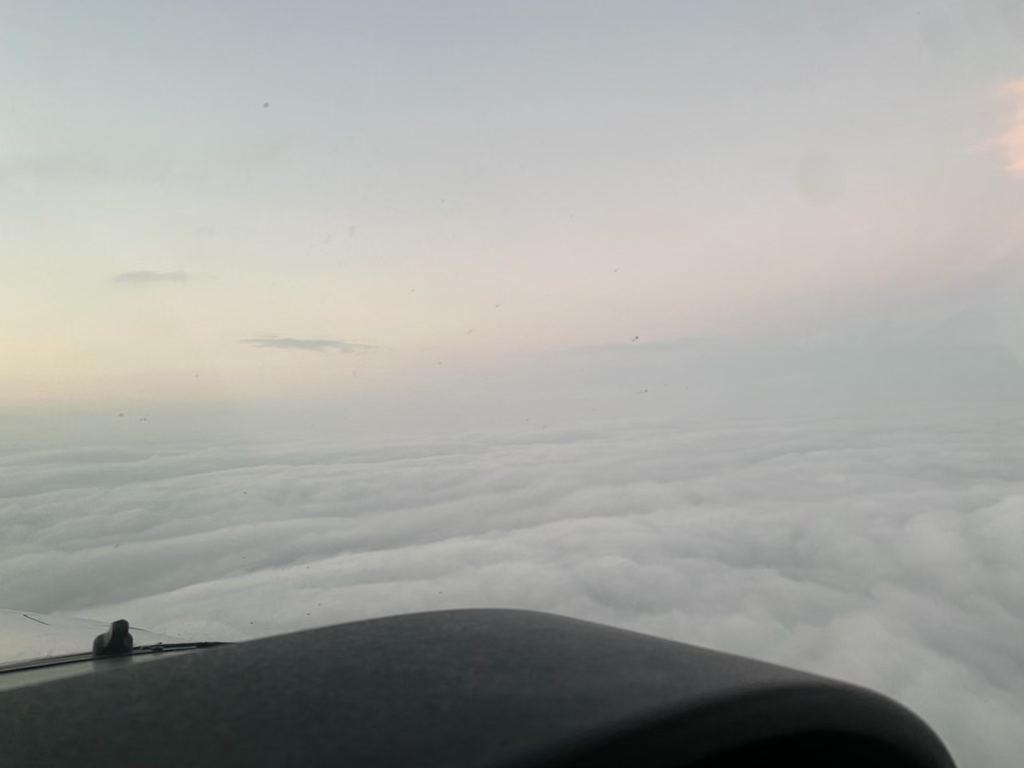Understanding TFRs and Their Impact on Private Pilots
- FlywithGabe

- 6 days ago
- 3 min read
Updated: 6 days ago
Temporary Flight Restrictions (TFRs) are crucial for aviation safety. Every pilot, especially private pilots, must grasp their significance. These regulations can deeply affect flight plans and operations, making it essential for pilots to stay informed. In this blog post, we will discuss what TFRs are, the reasons for their implementation, and their effects on private pilots.
What is a TFR?
A Temporary Flight Restriction (TFR) is a regulation that limits aircraft operations in specific areas for a short period. The Federal Aviation Administration (FAA) issues these restrictions for various reasons, including:
National Security: Protecting airspace during high-profile events.
Emergency Situations: Facilitating responses to natural disasters.
Special Events: Managing air traffic during public events.
Some TFRs may last just a few hours, while others can remain active for days or weeks, affecting numerous flights in the area.

Why Are TFRs Implemented?
TFRs serve various essential purposes. Here are some common reasons why they are established:
National Security: During events like presidential visits or major sporting occasions, TFRs restrict access to safeguard the airspace. For instance, during the Super Bowl, a TFR might extend for a radius of several miles around the stadium to prevent unauthorized flights.
Emergency Situations: In response to natural disasters, TFRs help coordinate emergency services. For example, during wildfires, TFRs can protect fire-fighting aircraft and ensure that they can operate without interference.
Special Events: Major public gatherings, such as airshows, baseball, football, and outdoor soccer games could prompt TFRs to manage crowded airspace effectively. In instances where airshows draw in crowds of thousands, TFRs are vital to maintain safety.
Understanding these reasons can help pilots see the critical role TFRs play in aviation safety.
How Do TFRs Affect Private Pilots?
Private pilots must remain vigilant as TFRs can directly impact their flight plans. Failing to comply with a TFR can result in severe consequences. For instance, a pilot may face fines that can reach up to $10,000 for repeated violations or may risk losing their flying privileges. To avoid complications, it is crucial for private pilots to be aware of active TFRs before taking off.
Pre-Flight Planning
Before starting a flight, private pilots should always check for active TFRs. This can be done through various tools, such as:
FAA Notices: The FAA regularly updates TFRs on their website, which is a crucial resource for pilots. https://tfr.faa.gov/tfr3
Flight Planning Tools: Mobile apps and software, like ForeFlight, Garmin Pilot, or SkyVector, often feature real-time TFR updates to help pilots stay informed while planning their routes.
NOTAMs: Notifications to Airmen (NOTAMs) are essential resources for the latest information about TFRs and other critical updates.
Integrating TFR checks into pre-flight planning allows pilots to sidestep potential violations and ensure a safe flying experience.

Navigating Around TFRs
If a pilot encounters a TFR during flight, they should navigate around it safely. Here are some effective strategies:
Know the Boundaries: Pilots must familiarize themselves with TFR boundaries and altitude restrictions. For example, if a TFR exists around a stadium, knowing the exact perimeter (often marked in nautical miles) aids in maintaining a safe distance.
Communicate with ATC: If unsure about a TFR or route, pilots should reach out to Air Traffic Control (ATC) for assistance. ATC can provide clarity and offer alternatives for safe navigation.
Stay Updated: TFRs can change at any moment, so pilots should continuously monitor their flight planning tools and listen to ATC updates throughout their journey.
By employing these strategies, private pilots can effectively navigate around TFRs and maintain regulatory compliance.
Consequences of Ignoring TFRs
The repercussions of ignoring a TFR can be significant for private pilots. The FAA takes violations very seriously, and consequences may include:
Fines: Pilots could face fines ranging from a few thousand dollars to over $10,000 based on the frequency and severity of the violation.
License Suspension: Repeat infractions or severe violations may lead to the suspension of a pilot's certification.
Legal Action: In extreme situations, pilots may face legal action if they endanger public safety or national security.
Understanding the potential consequences underscored the importance of complying with TFRs for private pilots.
The Bottom Line
Ignoring a TFR is never worth the risk. The FAA enforces these restrictions strictly, and violations can jeopardize both your certificate and aviation safety.
By making TFR awareness a habitual part of flight planning, private pilots can:
Avoid costly penalties.
Protect emergency and security operations.
Contribute to a safer, more efficient airspace system.

✈️ Final Thought: As a private pilot, your freedom to fly comes with responsibility. Staying informed about TFRs not only keeps you compliant but also ensures you can enjoy aviation safely and confidently




Comments